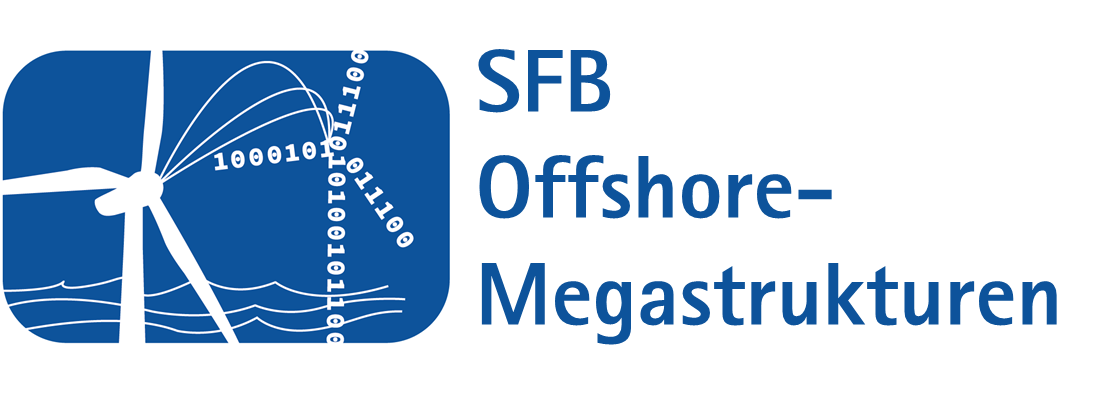In this sub-project the Hybrid-Lambda rotor design methodology was developed, which aims at enhancing wind turbine efficiency during light-wind conditions while maintaining structural and economic feasibility. This is achieved by optimizing offshore turbine performance for a low specific-rating (e.g. increasing rotor diameter without proportionately increasing rated power). The approach addresses the issue of wind energy self-cannibalization where a surplus of power output from conventional wind turbines at high wind speeds reduces the energy value. The developed methodology was first applied on a 15 MW Hybrid-Lambda rotor with a diameter of 326 m, that can capture more energy in light winds, while the loads are constraint in stronger winds to the same maximum value as for the 15 MW IEA reference turbine with a diameter of 240 m. In the further course of the project the methodology will be extended to a 22 MW offshore turbine.
Design Overview
Dual Operating Modes
The Hybrid-Lambda rotor is designed to be operated in a light-wind and a strong-wind mode. The outermost 30% of the blade is optimized for high tip speed ratios (TSR) and a reduced axial induction, improving performance in light-wind conditions. The inner part is designed for a lower TSR and a conventional axial induction. In strong winds, the TSR is reduced and the pitch angle increased, redistributing the torque generation to the inner blade section to constrain the flapwise blade root bending moment while still maximizing the power output.
Techno-Economic Performance
The Hybrid-Lambda rotor demonstrates notable improvements in cost-efficiency and energy production:
- Up to 30% increase in revenue compared to the IEA 15 MW reference turbine.
- A 16% reduction in the cost of valued energy (COVE) compared to the IEA 15 MW reference turbine.
- A 3% increase in AEP over a geometrically scaled reference rotor with the same diameter, achieved through reduced losses in efficiency during the peak shaving and improved aerodynamic performance.
- Additional advantages on a wind farm level are expected due to the reduced wake losses over a wide range of wind speeds.
Structural Design and Optimization
An initial structural lay-up was designed in close collaboration with subproject B03 including an aero-structural optimization loop. The much slender blade design leads to a mass reduction of 14%, compared to a geometrically scaled reference blade of the same size. Key structural constraints such as tip deflection, eigenfrequencies, and the constraint of the flapwise blade root bending moment are maintained when testing the blade in aero-servo-elastic design load cases.
Validation and Simulation
The aerodynamic and structural performance of the Hybrid-Lambda rotor was validated through detailed simulations:
- Blade-Element Momentum (BEM) Theory: Preliminary analysis confirmed the aerodynamic principles underlying the design. However, BEM showed limitations in modelling steep gradients along the blade span.
- Free Vortex Wake (FVW) Simulations: These provided a more comprehensive understanding of wake effects and rotor aerodynamics, confirming the feasibility of the rotor concept.
Wake Characteristics
The rotor exhibits a unique wake behaviour that enhances wind farm performance. During light-wind operation, the outer blade region generates a wake with higher wind speeds in an outer annulus. This reduces wake losses, particularly under stable atmospheric conditions and partial wake scenarios. Further, the wake deficits are greatly reduced over a wide range of wind speeds below rated power, since the rotor operates at lower thrust coefficients in the strong wind mode.



Scaled Testing and Experimental Validation
The rotor concept was scaled to wind tunnel size to be used with a model wind turbine with a diameter of 1.8 m in the turbulent wind tunnel in Oldenburg. The objectives of the scaling approach were to maintain the axial induction distribution for the light-wind and strong-wind modes and to reproduce the change in the distribution of the angle of attack when switching between the operating modes. In several measurement campaigns the rotor aerodynamics and wake characteristics were analysed and several advanced control strategies were tested, making the next step in the concept validation.
Scaled Testing and Experimental Validation
The rotor concept was scaled to wind tunnel size to be used with a model wind turbine with a diameter of 1.8 m in the turbulent wind tunnel in Oldenburg. The objectives of the scaling approach were to maintain the axial induction distribution for the light-wind and strong-wind modes and to reproduce the change in the distribution of the angle of attack when switching between the operating modes. In several measurement campaigns the rotor aerodynamics and wake characteristics were analysed and several advanced control strategies were tested, making the next step in the concept validation.
Publications
-
2024: Hybrid-Lambda: A low-specific-rating rotor concept for offshore eind turbines
Ribnitzky, D.; Berger, F.; Petrovic, V., Kühn, M. (2024) Hybrid-Lambda: A low-specific-rating rotor concept for offshore wind turbines, Wind Energy Science 9, 359-383
-
2023: Aero-structural coupled optimization of a rotor blade for an upscaled 25 MW reference wind turbine
Werthen, E.; Ribnitzky, D.; Kühn, M.; Hühne, C. (2023): Aero-structural coupled optmization of a rotor blade for an upscaled 25 MW reference wind turbine, Journal of Physics: Conference Series 2626, 012012
DOI 10.1088/1742-6596/2626/1/012012
-
2023: Rotor and wake aerodynamic analysis of the Hybrid-Lambda concept - an offshore low-specific-rating rotor concept
Ribnitzky, D.; Bortolotti, P.; Branlard, E.; Kühn, M. (2023): Rotor and wake aerodynamic analysis of the Hybrid-Lambda concept - an offshore low-specific-rating rotor concept, Journal of Physics: Confrence Series 2626, 012008
doi:10.1088/1742-6596/2626/1/012008
-
2022: Innovative aerodynamic rotor concept for demand- oriented power feed-in of offshore wind turbines
Ribnitzky, D.; Berger, F.; Kühn, M. (2022): Innovative aerodynamic rotor concept for demand-oriented power feed-in of offshore wind turbines, Journal of Physics: Conference Series, 2265 0302017
DOI: 10.1088/1742-6596/2265/3/032017

















